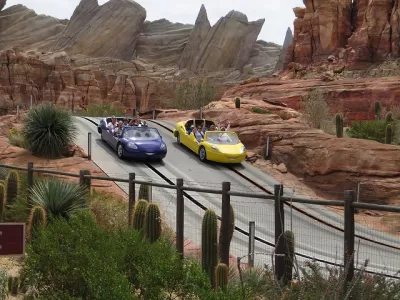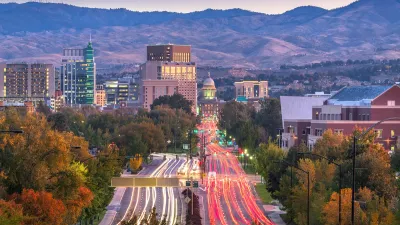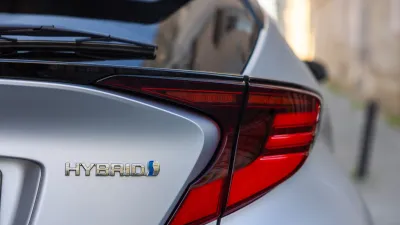While endeavoring to make an honest account of the motivations for driving, it's important to remember that some people really like to drive.

There's an omnipresent Audi commercial where the protagonist "David," obviously living in the future, waxes nostalgic with an A.I. named "Clara" about how driving used to be, before self-driving cars. "Driving wasn't just about being taken from place to place, but going somewhere—feeling something along the way."
Perhaps what David is talking about is the "Joy of Driving," which is far more prevalent a driver of, um, driving than might always be represented in the public discussion about transportation.
Jenna Fortunati, writing for Mobility Lab, has gathered a collection of research on the subject, noting first that researchers acknowledge three motives for driving: instrumental, affective, and symbolic. Fortunati explains the work of a team of researchers at the University of Groningen, who surveyed car commuters in Rotterdam about their motivations for driving—along the lines of the three kinds of motivations mentioned above.
“People more often commute by car when they judge its symbolic and affective functions more favorably,” Steg writes. “Even commuter traffic, which may be considered highly functional, is most strongly-related to non-instrumental motives.”
Other researchers have found similar evidence of driving for the joy in driving. Another study describes the feeling of "carcooning," or turning your car into a relaxation zone.
Fortunati makes no secret that Mobility Lab's interest in understanding these motivations is to provide alternatives to driving, writing: "So how can transit agencies compete? I’m not sure. But understanding this is important, because if we don’t understand why people might like to drive, we can’t reduce the amount of cars on the road – and create a transportation network that is sustainable and works for everyone, not just drivers."
And to make sure the lesson about the joy of driving sticks, here's another paean to cars and driving for the road, from the move Rush (2013).
FULL STORY: How much does the “joy of driving” affect people’s decision to drive?

Alabama: Trump Terminates Settlements for Black Communities Harmed By Raw Sewage
Trump deemed the landmark civil rights agreement “illegal DEI and environmental justice policy.”

Planetizen Federal Action Tracker
A weekly monitor of how Trump’s orders and actions are impacting planners and planning in America.

The 120 Year Old Tiny Home Villages That Sheltered San Francisco’s Earthquake Refugees
More than a century ago, San Francisco mobilized to house thousands of residents displaced by the 1906 earthquake. Could their strategy offer a model for the present?

In Both Crashes and Crime, Public Transportation is Far Safer than Driving
Contrary to popular assumptions, public transportation has far lower crash and crime rates than automobile travel. For safer communities, improve and encourage transit travel.

Report: Zoning Reforms Should Complement Nashville’s Ambitious Transit Plan
Without reform, restrictive zoning codes will limit the impact of the city’s planned transit expansion and could exclude some of the residents who depend on transit the most.

Judge Orders Release of Frozen IRA, IIJA Funding
The decision is a victory for environmental groups who charged that freezing funds for critical infrastructure and disaster response programs caused “real and irreparable harm” to communities.
Urban Design for Planners 1: Software Tools
This six-course series explores essential urban design concepts using open source software and equips planners with the tools they need to participate fully in the urban design process.
Planning for Universal Design
Learn the tools for implementing Universal Design in planning regulations.
Clanton & Associates, Inc.
Jessamine County Fiscal Court
Institute for Housing and Urban Development Studies (IHS)
City of Grandview
Harvard GSD Executive Education
Toledo-Lucas County Plan Commissions
Salt Lake City
NYU Wagner Graduate School of Public Service





























